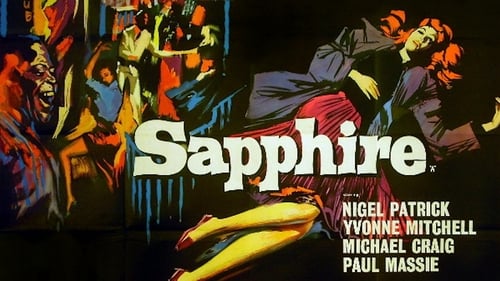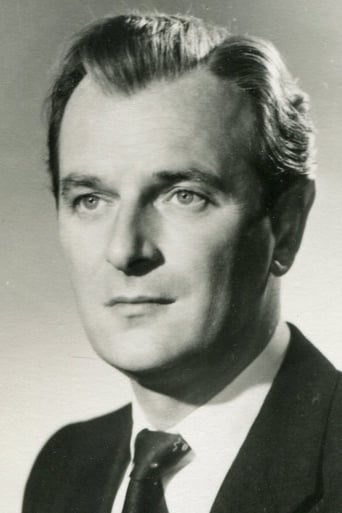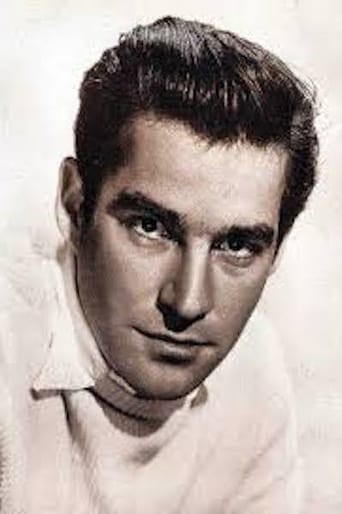Solemplex
To me, this movie is perfection.
BootDigest
Such a frustrating disappointment
Phonearl
Good start, but then it gets ruined
AutCuddly
Great movie! If you want to be entertained and have a few good laughs, see this movie. The music is also very good,
lucyrfisher
This film really is as good as everybody says. Nigel Patrick makes an excellent principled investigator. His younger sidekick is the one who casually lets fall a succession of racist myths. A girl is found stabbed on Hampstead Heath - it turns out she is a music student with a serious, striving boyfriend. But the cops are surprised by the red taffeta petticoat she wears under her sober "tweed" skirt. (It's a brown, with sunray pleats.) When her brother turns up, they discover that she is "coloured", and has been passing for white. Much of the investigation focuses on the boyfriend's family, who are aspirant, respectable working class. His dad is a sign painter played by the great Bernard Miles. One of the film's many virtues is that we SEE him painting a sign, and see his workshop at the back of the house in a former stable block. The family stand together and assert that they accepted Sapphire, background, pregnancy and all.Londoners love films set in our city decades ago. Oh, look, I remember those Victorian shops, those buses! There are many excellent bit players, including a couple of landladies – one who says "I run a WHITE house" while smiling crookedly. Another wears a Cairngorm brooch and says she would have thrown Sapphire out if she'd "known". The past wasn't all that cosy. Sapphire's brother says he'll stay at a certain hotel which will "take us".The film is in colour, all the better to show off the garish underwear. There is a wonderful visit to Babette's lingerie shop in Shaftesbury Avenue. The detectives hold up a bright pink nylon negligee with some disgust. Stereotypes fly - a girl may look white, but if she has black ancestry she can't resist the rhythm of the bongos. There are many black characters - more than in most TV dramas or films of today, and they all impress. One is a dandy with a bishop for a father. There are some dubious types hanging out in an empty house. A dimwitted suspect goes on the run through the mean streets and the film reaches another level. He's beaten up by some "teddy boys" and takes refuge in a newspaper shop run by a kindly (white) old couple.It's about this point the watcher realises that this is no standard detective story. The acting is superlative, especially from the boyfriend's family - his worried mother, and fraught sister, whose husband is permanently "at sea".Exteriors are drab because that's how they were. But interiors are carefully painted to look as dreary as possible - perhaps to show up snappy suits and orange lipstick. But were walls and furniture really painted in shades of brown or grey? There's a lovely scene early on where Sapphire's student friends discuss her in Foscari's coffee bar. I wish we'd seen more of them.
MartinHafer
Basil Dearden directed some dandy films--and a set of them are available through Criterion and frankly, all are quite impressive. With films like "Victim", "The League of Gentlemen" and "Sapphire", it's one of the best collections I've seen from this company.The film begins with the discovery of a dead woman in the park. However, this turns out to be anything but a routine case when the police investigate. First, it turns out the lady was pregnant. Second, it turns out that although she appeared quite Caucasian, she was black and posing as a white woman. While this sort of plot might seem pretty routine today, back in 1959 it was absolutely daring--and the sort of picture Hollywood NEVER would have done. I not only appreciate the daring subject matter, but also the amazingly unflinching way it approached racism. In fact, I am not even sure that they could make a movie like this today--given the bluntness of the language--but that is what makes this movie great. Racism IS horrible and the language they use make it seem horrible.The bottom line is that the film is amazingly good. The film is free of clichés and is very well written. I also appreciate the wonderful job Nigel Patrick did in playing the chief inspector--one of the only seemingly sane people in the film! Well worth seeing and amazingly brave. It's not surprising then that the film won the BAFTA (sort of like the British version of the Oscar) for Best Picture.
carolscott564
I first saw the movie Sapphire on the Million Dollar Movie one night and I fell in love with it. I"m one for a good mystery movie and this is the one. From start to finish and when the movie did end I wanted more. The movie's ending will surprise you. The cast was excellent and actors Nigel Patrick Earl Cameron and Yvonne Mitchell were just great. I finally purchased this movie from one of those hard to find videos company on VHS. This movie needs to be released on DVD!!!! The racism in Sapphire was very brutal and honest. Here you had the tragic mulatto who is murdered I think of Imitation of Life where Susan Kohner's Sarah Jane is passing for white to the point she gets beaten up by her secret white lover, she was lucky!!!!!!!
robert-temple-1
This is one of the most shocking films ever made about the true depths of colour prejudice in Britain in the 1950s, and the violent hatreds of black people harboured at that time by the white British working classes, especially in London. The film is well-scripted, and boldly directed by Basil Dearden, and it shows without flinching the true state of feeling as it was in those days (with some strong anti-white prejudice by blacks thrown in, to demonstrate that things are never only one way). What is so utterly horrifying about watching all of this now is, that it really was all true then. It is inevitable that some of the characters both white and black should resemble stereotypes, perhaps for the reason that at that time, people genuinely were stereotypes. The story concerns a police investigation of a murder of a young girl who was a student at the Royal Academy of Music (half way through the film a policeman calls it the Royal College of Music; Londoners are always confusing the two separate institutions in that way, so perhaps this script flaw merely reflects real life). Her body is found on Hampstead Heath in London, and there are no clues apart from the initial 'S' (her name is eventually discovered to be Sapphire). As a crime investigation thriller, the film is solid and extremely well done. A spectacular cameo performance is given by the black actor Robert Adams as 'Horace Big Cigar', not long before he died. The acting is all reliable and convincing. Dearden is especially good at not allowing any of the women and children to scream when discovering a body or having a horrible experience: his technique was extremely subtle, and they instead stifle screams, a scream begins to form, and then they put their own hands over their mouths in horror. When identifying a corpse, the actor behaves as one would naturally do, with numb paralysed shock, remaining silent and staring. All the ridiculous Hollywood histrionics and stock reactions of approved hysteria and screaming females are eliminated from this very British film, in which there is no place for hysteria except with one black character who panics for story reasons. Sociologists should really see this film. However, it is so incendiary that I cannot see it ever being released again or even being shown on television, at least not in Britain. In fact, some of the comments in the film may even have become 'illegal' under the harsh new race relations laws, even in a fictional context! Anyone who thinks race problems have gone away does not know human nature. Sensitivity to small differences, such as skin colour, is so firmly rooted in animal behaviour (the isolation by the herd of the black sheep, the driving away of albino animals from the pack), that race hatreds are inescapable, and can only be suppressed, never eradicated. Seeing this film reminds one of this depressing aspect of life by a blatant portrayal of it which is almost too painful to watch.






